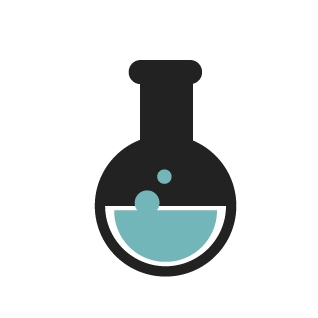Cat food isn’t even any more expensive than canned tuna and other similar canned meats. You’re not saving any money. You’re eating cat food for no reason!
Do you mean “cat food isn’t even less expensive…”?
That does appear to be how words be.
Please don’t eat this. My cat needs his gainz
My neighbor has an indoor cat that spends all day getting into the highest spots he can find. This is his hobby. I’ve watched him get down from on top of the high-hung cupboards and the way he did it… it was like the whole apartment was his planet fitness. They all called him fat, because at first glance, sure you could say that.
He got down to come see me when I first visited and I was 100% sure that I never wanted to mess with this cat. It was like patting a fuzzy wall. He is not fat. Bro is built like a tank. He’s literally V shaped. He’s survived years with three pitbull dogs that like to chase him and try to use him as a toy. Out of all the animals there, that is the scariest one. That’s what happens when your cat uses ALL the protein in that food for gainz.
I pointed this out to one of the neighbors and the look on their faces as they realized I was right.
And then there’s the other kind of cat (mine) that uses all the protein to become pear-shaped.
Lonely, social security, grandmas gettin in dat protein
Ounce for ounce, this shit is wildly expensive. You could eat far cheaper and not be you know… eating fucking cat food.
True but Royal Canin’s beef mix does smell tempting.
Royal Canine is a cat food horrible brand. https://catfooddb.com/brand/royal canin
Yeah… that doesn’t seem like a reliable site. According to the FAQ the owner just reads the labels and assigns a rating based on their own undocumented scoring system. They also have no particular qualifications for the work they’re doing and make several clerical errors due to their own bias. For example, they don’t count anything listed only as “protein” as protein because they don’t trust the manufacturer not to lie on the label. Given that this site gets literally all of their information from the manufacturer’s label, I’m sure you see why that’s a problem. Their information is also just plain wrong on some accounts, such as labeling Royal Canin as “significantly lower carbs than average” while most experts agree the opposite is true. The reason they get these wrong is due to a flawed methodology. They basically add up the percentages on the labels and classify whatever is left however they want.
For the record, I don’t feed my cat Royal Canin (due to the above reason), I was only commenting on the smell. Nevertheless, I would advise everyone to steer away from that site.
What exactly is this website? I’d never heard of it. It seems legit, but I’m curious about their sourcing.
It’s legit. Her only fault is the data is always slightly out of date because pet food manufacturers are always changing their recipes, which change the dry matter basis values and warnings about ingredients.
It’s all explained on her about page, but basically she has painstakingly built up the database by sourcing everything herself and accepting some community input. I personally have emailed to have things updated.
Fun fact, because of the great depression, canned pet food has to be safe for human consumption.
Well, for now, at least
I couldn’t find anything on the great depression requiring pet food to be safe for human consumption. I would love for someone to prove me wrong through.
According to this PetMD article, prior to WW2 pet food was a luxury item. During WW2 pet food production completely stopped due to the war. (No cited sources on this article though, I am not sure how accurate it’s claims are?)
According to this Vice article, pet food is held to some standards but technically does not need to be safe for human consumption. (Again, I am not sure how trustworthy of a source Vice is)
This is the best source I have found, a peer reviewed and cited research article published on Jan 30th 2023: Insights-Driven Development of Humanized Foods for Pets. It clashes with the above article in that it talks about pet food production during WW2 and actually cites sources. In regards to pet food being required to be fit for human consumption, it doesn’t mention anything about the great depression. It actually mentions that this is a more recent development and that there still isn’t a “set standard”
A seemingly simple yet confusing claim that has appeared recently in the pet food space is “human-grade,” whereby additional regulations regarding manufacturing, packaging, and storing of the food ensure compliance with safety standards of human consumption guidelines (Oba et al., 2020). Although this claim has been used for pet foods for a few years, it has no definition in animal feed regulations. The term “edible,” however, is defined by the US Department of Agriculture as foodstuffs that have been processed, inspected, and passed manufacturing regulations that are designed to ensure safety for consumption by humans. Pet foods that truly meet this standard must include only ingredients that are human edible and must be manufactured, packed, and held in accordance with the Code of Federal Regulations (CFR) Title 21 (AAFCO, 2021; FDA, 2022). Currently, AAFCO is in the process of drafting guidance for “human-grade” claims in pet foods in an attempt to provide clarity to the claim (AAFCO, 2021). The proposed definition outlines that pet foods using the “human-grade” claim are first and foremost animal food products that are subjected to inspection under 21 CFR 507, manufacturing must be in accordance with 21 CFR 110, and the overall process is conducted according to standards ensuring human consumption safety (Carter et al., 2014; Oba et al., 2020; FDA, 2022). Furthermore, the pet food bearing a “human-grade” claim must be manufactured in accordance with the applicable human food regulations for ready-to-eat human food (AAFCO, 2021, 2022)
Fucking human food isn’t safe for human consumption any more.
You complain about microplastics in our food.
I am happy about the extra synthetic fiber intake.
We are not the same.
Pate of cow and chicken buttholes? No thanks, I prefer Soylent Green, just add cheese in a can!
Ordinary Sausage made a sausage out of cat food. Gave it 3.5/5; higher than quite a few made out of “regular” food. Make of that what you will.
well he is clinically insane.
the one-two punch of the $40B lobster and the 300-step garbage can nachos cracked his mind.
What does $40B mean?
B for billion. i would use G but i think it could be mistaken for “grand”
I’m confused still I guess. He bought and ate a 40 billion dollar item?
he bought $30 worth of lobster tails and made a sausage, and he says multiple times in the video that he thinks it was too much money. but people kept requesting even stupider sausages so he just got more and more annoyed that he had spent the money, and over the years the running gag became that every time the lobster is mentioned the price goes up
Edit: also if you compare his tone in that video to one of his more recent ones you’ll understand what i meant about insanity (“three mark ruffalooooos!!!”)
Okay thanks for the explanation. 🤣
https://www.youtube.com/watch?v=uGCoOJSj7jk
Let’s sausage!
🎶 LeeEEeet’s SaaaAAAAUUUuusaAAgeeee 🎶
Ew thx
I can’t imagine it’s much worse than Vienna sausages in that form, and someone is eating enough of those to keep them on store shelves.
Anon will pee rocks soon.
That’s anons goal. Anon collects rocks.
Closest thing to a job they have too
I’m not fancy enough
Wet cat food is one of the worst things I’ve ever put in my mouth. Don’t do it. It isn’t worth it.
For one thing, cats can’t handle the level of salt in human diet. So to a human, cat food is very bland. This is also why one shouldn’t feed cat salty human food.
That’s just…wrong? Cats have incredible kidneys and they can drink salt water.
Didja cook it?
No. That wouldn’t be repreaentative of what cats experience.
It’s already cooked in the can
Really? Figured it was raw.
…is the raw can cheaper?
It’s part of the process of canning. The cans must be heated to kill all bacteria inside, otherwise anaerobic bacteria can reproduce in the can and cause nasty diseases like botulism.
…
botulism has gotta drive the price down.
Eating rotten canned food is just the poor man’s Botox treatment
District 9
I once made chicken liver pate for my cats, as a treat. It was only chicken liver pan-fried in a bit of lard, with a bit of salt. My cats flat out refused, but it turned out delicious so I froze it into cubes for myself, and ate it across the span of two weeks.
I still prepare it often, albeit with a different recipe.
Hey my cat likes that one! Cheap, too
I bought one for my cats a while ago. I was opening a can of something else (I forget, spam maybe) with the same pull off lid and they full on sprint towards me meowing like I hadn’t just fed them an hour before.
Happens with cans of everything.
That’s cats for you.
No, it was definitely the spam.
They actually really don’t like spam lol.
More for me, then.
















